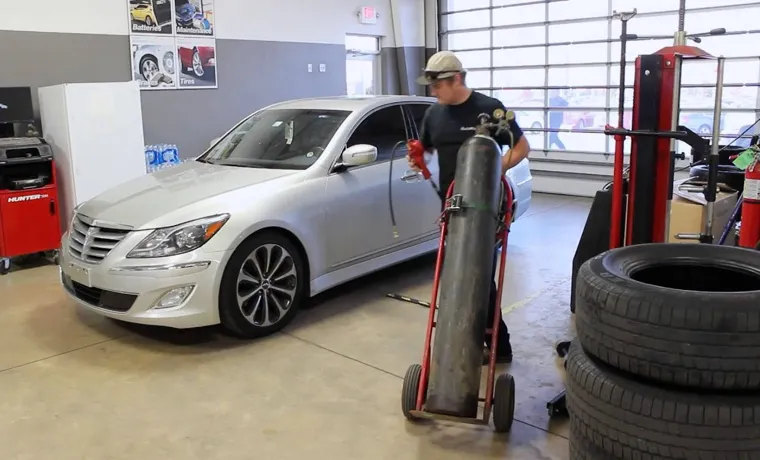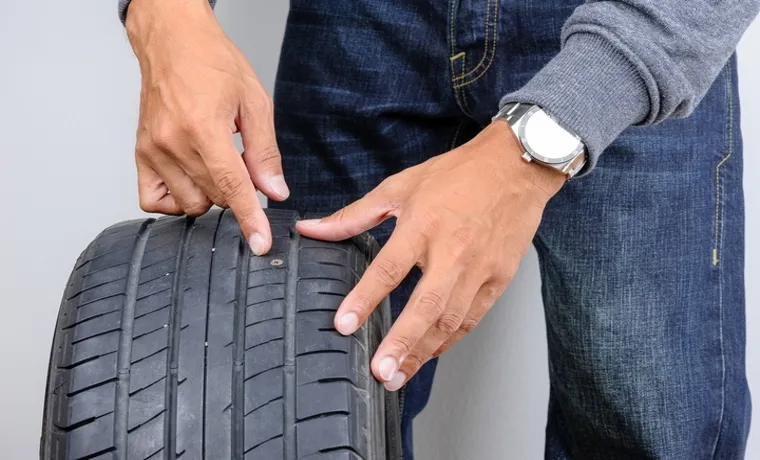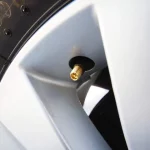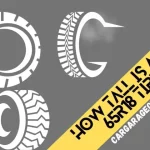Do you feel like you’re constantly playing a game of whack-a-mole with your car’s tire light? Every time you think you’ve fixed the issue, it pops up again, leaving you frustrated and confused. Your tire light keeps coming on, but why? The answer isn’t always straightforward, and it can be tricky to figure out what’s causing the problem. In this blog, we’ll explore some of the common reasons why your tire light might keep coming on, as well as provide helpful tips on how to prevent it from happening in the future.
So, if you’re ready to put an end to this annoying game of cat and mouse, read on to find out why your tire light keeps coming on!
Table of Contents
Understanding Tire Pressure Monitoring Systems (TPMS)
So, you’re driving along and suddenly your tire pressure warning light comes on. You stop and check your tires, and they seem fine. What’s going on? Well, chances are you’re dealing with a TPMS, or tire pressure monitoring system.
TPMS is a safety feature that alerts you when your tire pressure drops below the recommended level. However, sometimes the system can be finicky and give you false alarms. The main reason for this is changes in temperature.
As the temperature drops, the air inside your tires shrinks, causing the pressure to drop. On the other hand, when the temperature rises, the air inside your tires expands, leading to higher pressure levels than what’s recommended. That’s why it’s important to keep an eye on your tire pressure, especially during colder months, to avoid unnecessary panic and keep your vehicle running smoothly.
What is TPMS?
TPMS, tire pressure monitoring systems TPMS, or tire pressure monitoring systems, are devices installed in your car that help to keep track of the air pressure in your tires. These systems are designed to alert you when the pressure in your tires drops below the recommended level. This is important because underinflated tires can reduce fuel efficiency, increase tire wear and tear, and even cause accidents.
TPMS works by using sensors installed in each tire that transmit data about tire pressure to a central module in the car. This module then uses this information to provide drivers with a warning when tire pressure drops below a certain level. By understanding and maintaining the proper tire pressure, you can ensure that your car drives smoothly, safely, and efficiently.
So make sure to keep an eye on your tire pressure and trust in the accuracy of your TPMS system.

How Does TPMS Work?
Tire Pressure Monitoring Systems (TPMS) Have you ever heard of tire pressure monitoring systems (TPMS)? These systems are designed to alert you when your tires’ air pressure is either too high or too low, thereby helping to reduce the risk of tire blowouts and improve overall vehicle safety. TPMS works by using sensors that are located inside each tire or are attached to the valve stem. These sensors measure the tire’s air pressure and send this information to a control unit, which then decodes and displays the data on your vehicle’s dashboard.
A warning light will appear on the dashboard if one or more of your tires is underinflated or overinflated. By monitoring our tire pressure with TPMS sensors, we can ensure that our tires are properly inflated, which leads to better gas mileage, longer tire life, and most importantly, a safer driving experience on the road.
Common Reasons for TPMS Alerts
Have you ever wondered why your tire light keeps coming on? There are several common reasons for TPMS alerts that may be the culprit. One of the most common reasons is low tire pressure. When your tires are underinflated, it can cause excessive wear and tear, decreased fuel efficiency, and potentially lead to a blowout.
Another reason could be a tire puncture or leak, which can also cause low tire pressure. It’s essential to check your tires regularly for signs of damage or leaks to avoid potentially hazardous situations. Other reasons for TPMS alerts may include faulty sensors, dead batteries in the sensors, or even extreme temperatures.
By addressing these issues promptly, you can ensure your safety on the road and avoid costly repairs. Remember, your tire light is not something to ignore, so it’s crucial to take action and resolve the issue as soon as possible.
Low Tire Pressure
Low Tire Pressure is a common reason for TPMS alerts. It is essential to maintain the correct tire pressure levels, as low tire pressure can lead to various issues such as poor fuel efficiency, tire damage, and even accidents. TPMS or Tire Pressure Monitoring System is installed in vehicles to alert drivers when their tire pressure is low.
A TPMS alert could mean that you have a flat tire, a punctured tire, or one that has low pressure. When a TPMS alert appears, one should immediately check the tire pressure and inflate or replace the tire as necessary. Maintaining proper tire pressure is crucial not only for the vehicle’s health but also for the safety of passengers and other drivers on the road.
So, it is always wise to check the tire pressure frequently and keep it at the recommended levels.
Faulty TPMS Sensors
One of the most common reasons for TPMS alerts is faulty sensors. TPMS sensors are designed to monitor the tire pressure and send signals to the car’s computer in case of issues. However, if the sensors are mistakenly installed or fail to function correctly due to damaged components, wrong calibration, or other reasons, they can provide false readings or malfunction.
This can lead to unnecessary or inaccurate alerts, causing drivers frustration, worry, or even dangerous situations. Therefore, it’s essential to ensure that the TPMS sensors are properly installed, calibrated, and maintained regularly to prevent faults and ensure accurate readings. By doing so, drivers can trust their TPMS alerts and take appropriate actions to ensure better tire performance, safety, and fuel efficiency on the road.
Dead TPMS Batteries
One of the most common reasons why TPMS alerts are triggered is due to dead batteries within the TPMS sensors. These sensors are responsible for transmitting tire-pressure data to your vehicle’s computer system and can become unresponsive if the battery within them dies. This can cause frustration for drivers as it can be difficult to pinpoint which tire is causing the problem.
When a TPMS alert is triggered, it’s essential to have your tires checked for both pressure and a possible dead battery in the sensors. Ignoring the alert can cause reduced fuel efficiency, increased tire wear, and even dangerous blowouts. By keeping an eye on your tire pressure and promptly taking action when a TPMS alert occurs, you can help ensure the safety and longevity of your vehicle.
What to Do When Your TPMS Light Comes On
If you find yourself asking “why does my tire light keep coming on,” there are a few potential reasons. The most common reason is a problem with the tire pressure monitoring system (TPMS), which can be triggered by a change in temperature or low tire pressure. Another possible cause could be a faulty sensor or damaged tire.
Whatever the reason, it’s important to take the warning seriously and get your tires checked as soon as possible. Ignoring the warning could put you at risk of a tire blowout or other dangerous tire-related issue. To address the problem, start by checking your tires’ pressure and ensuring they meet the manufacturer’s recommended levels.
If the issue persists, take your vehicle to a trusted mechanic for a more thorough inspection. Remember, your tires are a crucial part of safe driving, and addressing any issues promptly can help ensure you stay safe on the road.
Check Your Tire Pressure
When your TPMS light comes on, it can be alarming. However, don’t panic. This is simply your car’s way of telling you that your tires need attention.
Typically, the TPMS light will come on when your tire pressure is either too high or too low. Regardless of which it is, it’s important to address the issue promptly. The easiest way to do this is to check your tire pressure with a gauge and adjust it as needed.
This is a simple task that can be completed in just a few minutes, but it can make a big difference in your car’s performance and safety. And remember, regular tire maintenance is key to avoiding issues with your tires and prolonging their lifespan.
Check Your TPMS Sensors
If you see the TPMS light on your dashboard, it’s time to check your TPMS sensors. The TPMS, or tire pressure monitoring system, is a safety feature that alerts you when the pressure in one or more tires is low. Low tire pressure can lead to decreased fuel efficiency, loss of control while driving, and even tire blowouts.
To fix this, start by checking the tire pressure with a gauge and inflating any tires that are low. If the light doesn’t turn off, it may be a sign of a faulty sensor. Head to your trusted mechanic for inspection and replacement if necessary.
Remember, properly inflated tires not only keep you safe but also help you save money in the long run.
Preventing TPMS Alerts
If you’re wondering why does my tire light keep coming on, the most likely culprit is the TPMS (Tire Pressure Monitoring System). This system is designed to alert drivers when their tires are significantly underinflated, as this can lead to decreased fuel efficiency, poor handling, and potential safety hazards. However, false alarms can be frustrating and potentially dangerous if they distract drivers from legitimate warnings.
To prevent TPMS alerts, it’s important to regularly check your tire pressure with a reliable gauge and inflate them to the recommended level as specified in your car’s manual. Keep in mind that tire pressure can fluctuate with changes in temperature and altitude, so adjust accordingly. Additionally, make sure your tires aren’t damaged or leaking.
By maintaining proper tire pressure and ensuring your tires are in good condition, you can minimize unnecessary TPMS alerts and keep your vehicle safe and efficient on the road.
Regular Tire Maintenance
Regular tire maintenance is the key to preventing TPMS alerts, which can be both frustrating and costly. TPMS, or tire pressure monitoring system, is designed to alert drivers when tire pressure drops below the recommended level. However, constantly receiving these alerts can be a major nuisance.
The best way to prevent TPMS alerts is by regularly checking your tire pressure and maintaining it at the appropriate level. This is especially important during extreme weather conditions and seasonal changes. In addition, you should also keep an eye out for any signs of wear or damage on your tires, such as cracks or bulges, and replace them as needed.
By taking good care of your tires, you can avoid the inconvenience of TPMS alerts and ensure a safer and more comfortable driving experience. Remember, regular maintenance is the key to keeping your tires in top condition and avoiding unexpected setbacks.
Replace TPMS Sensors When Needed
As a car owner, you might be familiar with the occasional frustrating experience of having your TPMS (tire pressure monitoring system) light come on unexpectedly. Preventing these alerts is crucial for your safety on the road and the longevity of your tires. The best way to do this is by replacing TPMS sensors when needed.
These sensors are responsible for detecting and reporting any changes in tire pressure, which in turn allows you to address any issues before they become major problems. Over time, TPMS sensors can degrade or become damaged, rendering them ineffective. By replacing them as soon as needed, you can avoid the inconvenience of frequent TPMS alerts and ensure that your vehicle’s tire pressure monitoring system is working properly.
Trust us, it’s better to invest in replacing a sensor than to be caught off guard with a flat tire on the highway.
Conclusion
Well, it seems like your tire light has become a bit of a “bright” spot in your driving adventures. Perhaps it’s simply eager to remind you of the importance of properly maintaining your tires and keeping them inflated to the correct pressure. Or, it could be like a mischievous little gremlin, playing games with you just for fun.
Either way, the solution is clear: take a few minutes to check your tire pressure, inflate as needed, and give your tires the TLC they deserve. Then sit back, relax, and enjoy the peace of your tire light staying off. Cheers to safe and smooth driving!”
FAQs
What are the common reasons why my tire light keeps coming on?
The most common reasons for a tire pressure warning light to come on include low tire pressure, a faulty sensor, or a punctured tire.
How do I know if the tire pressure warning light is accurate?
You can check the accuracy of the tire pressure warning light by manually checking the tire pressure using a pressure gauge.
Is it safe to drive with the tire pressure warning light on?
It is not recommended to drive with the tire pressure warning light on as it could indicate an issue with your tire that could lead to a blowout.
How often should I check my tire pressure?
It is recommended to check your tire pressure at least once a month or before long trips to ensure proper inflation.
What should I do if my tire pressure warning light comes on while driving?
You should immediately pull over to a safe location and visually inspect your tires for any signs of damage or low inflation.
Do I need to replace the tire pressure sensors if they are faulty?
Yes, faulty tire pressure sensors should be replaced to ensure accurate readings and prevent any potential safety hazards.
Will the tire pressure warning light turn off on its own once I add air to my tires?
In some cases, the tire pressure warning light will turn off on its own after the tires are properly inflated. If the light does not turn off, it may require further investigation.



